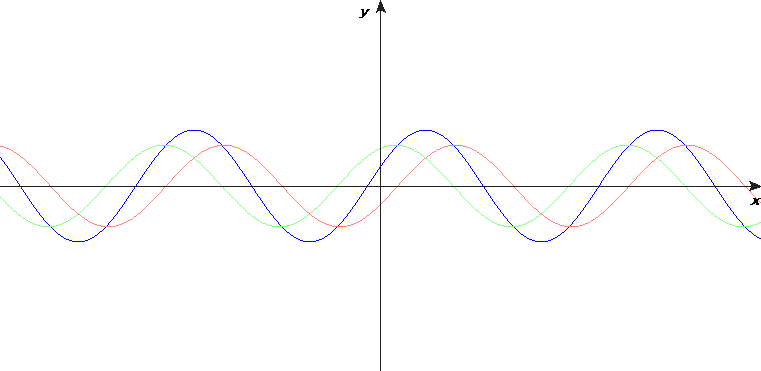So now we're going to bring this all together, which should present us with a good model for understanding wormholes in EVE, and from which we can extrapolate to both the mechanics of the Seyllin Incident, the mechanism of the Jove Dyson cloud network, and even the function of the EVE gate.
See, I told you it was a happy thought.
The idea behind wormholes, as predicted by relativity, is that 4-d space-time is manipulated in such a way as to create a bridge from one location in space time to the next.
I covered this already. The issues arise with that negative energy in the throat of the wormhole. Remember that the acceleration due to gravity is so strong there that not even light can escape, meaning that travel across it is fairly impossible. There must be some mechanism or some exotic matter to make that jump possible.
At least if you were a particle.
Waves, on the other hand, are all about the transfer of energy rather than the movement of particles. Indeed in a wave, although there's definitely something moving, particles do not, in fact change their location in the direction of movement. They oscillate up and down, but they don't go forward and back.
More on that in a second.
The wormholes are generally thought to be made by large masses causing contortions in space-time. Fairly simple to understand in terms of the rubber sheet model. You get two masses pushing down at the same time, and they may connect.
But that's not the only way to get a rubber sheet to move. And caveat now, this is where the Science becomes mostly fiction. I'm not good enough to put the numbers to this hypothesis yet.
We can also get our sheet to move by applying a wave. In the case of space-time, a gravitational wave.
If we get the peak and trough of two gravitational waves to link up, then we can also create the bridge between two locations in space. Which is super exciting!
 |
| Placeholder for better image |
The large mass model is static. Once the bridge is made, it's there until the energy is all lost from radiation of exotic particles. The formation of them also needs an awful lot of matter to cause the contusion of space-time. Not something a ship can reliably carry around with it.
The waves don't need as much mass, just an oscillation of local-space time. Ok, we need moving masses for this to happen, but the key point here is that the mass does not need to be IN the wormhole.
This goes a long way to describing how our ships can seemingly shift between locations in space at low energy. At the centre of the wormhole as we see it, our ships actually catch the anti-node of the wave as it becomes flattened into 'normal' space-time.
As the wave then oscillates back to it's peak, our ships are carried with it, and cross over to the other wave peak as it comes in. When the second wave flattens out again to 'normal' our ships are deposited back into a new location, and our autopilot moves us away from the peak area where this exchange happens.
This is why all ships have the same entry distance to wormholes, and larger ships with more mass appear further away. More massive ships must move further away so as not to be caught in the wormhole oscillation again. Less massive ships are less affected by the contortion of space time.
This now explains why wormholes in New Eden have a lifetime based on the mass of objects passing through. Massive objects around the wormhole act as dampening. The more massive objects that pass through, the greater the dampening effect. The energy of the wave is absorbed in moving the ships from one location to the other. Once enough energy is absorbed, the amplitude of the wave falls so that it no longer causes these bridges in space time.
It also explains why light from the other side of the wormholes is able to pass through without colour changes due to gravitational red shift. It is quite literally being carried from one section of space on the gravitational wave, rather than having to pass into and out of a very high gravitational field.
It's also consistent with the ripple effect we see being emitted from wormholes. They move, rather than being static.
There is so much more to talk about, but I'll expose this to public opinion first. But if this is correct, or at least good enough for EVE, then we can now explain random wormhole appearances, ship board wormhole generators, the exact reason for the Seyllin Incident, and what the EVE Gate actually is.
Additional: If anyone can help me make a nicer image for this waves touching idea, please get in contact... I lack the graphical skills.





